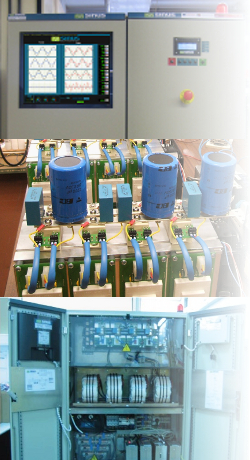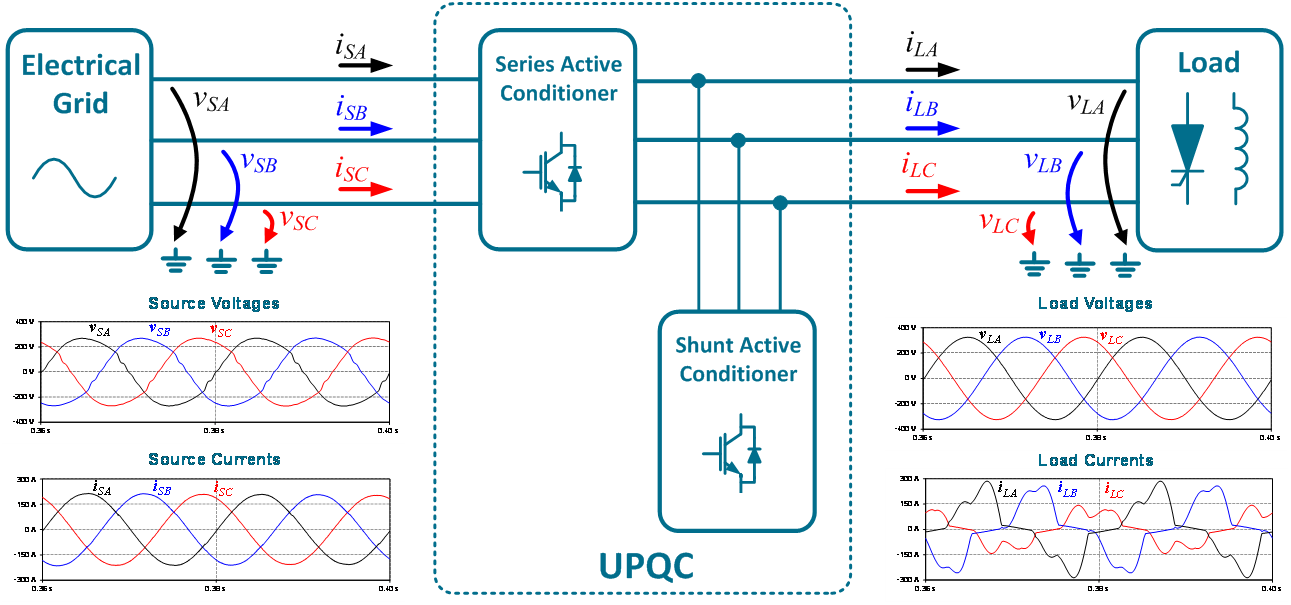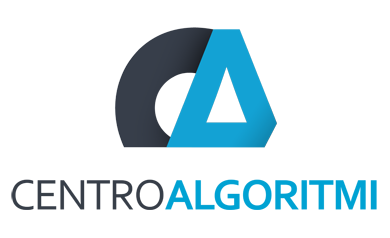
|
A Unified Power Quality Conditioner – UPQC results from the joint operation of a series active conditioner and a shunt active conditioner. The UPQC aggregates in a single equipment the current compensation capabilities of a shunt active power filter and the voltage compensation capabilities of a series active filter, allowing the mitigation of many of the electrical system Power Quality problems, namely:
There are several UPQC arrangements, the most usual consist in two power inverters sharing the same DC-link capacitor in a back-to-back topology. One of the power inverters is connected in series with the electrical system through of coupling transformers and the other is connected in shunt by means of coupling inductors. A block diagram of the UPQC and the typical waveforms of the source and load voltages and currents is presented in the following figure. 
Although the UPQC usually only use capacitors in the DC-link, with the appropriate control theory, is possible to compensate undervoltages and overvoltages in steady state. To compensate undervoltages, the shunt connected active conditioner needs to absorb the active power injected by series conditioner, keeping the DC-link charged. To compensate overvoltages, the series connected active conditioner absorbs active power that is returned to the power grid by the shunt connected active conditioner. In the context of the development of techonlogies for UPQC, the GEPE was responsible for the research projetc UPQC-IM-REI - Unified Power Quality Conditioner with Integrated Monitoring and Renewable Energy Interface. For more informations related with this project visit:UPQC-IM-REI |


